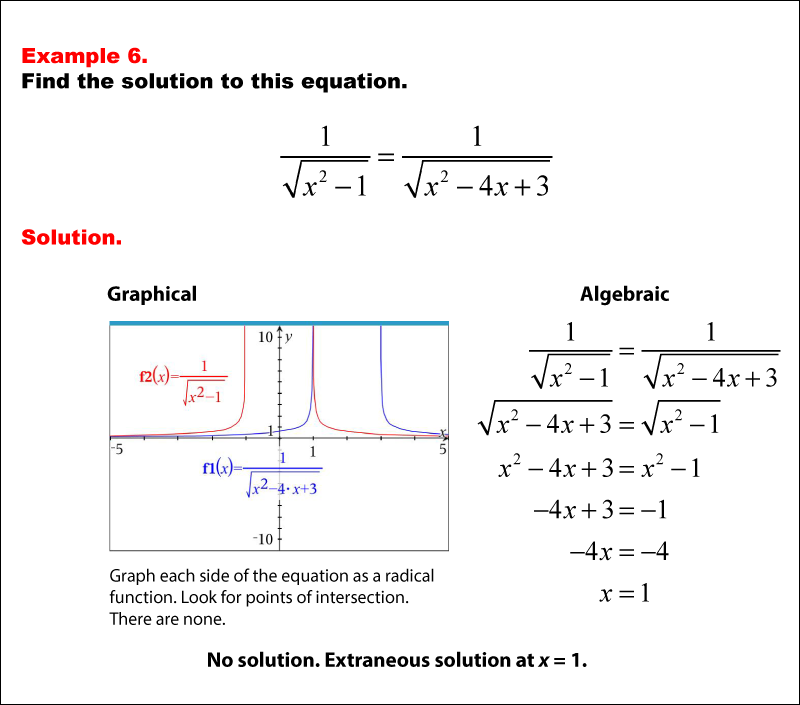
Display Title
Math Example--Solving Equations--Extraneous Or No Solutions--Example 6
Display Title
Extraneous Or No Solutions--Example 6

Topic
Equations
Description
This example showcases a radical equation that appears to have multiple solutions but actually has none, or only an extraneous solution. Such equations often involve a combination of algebraic fractions, radicals, and absolute values, and might take a form like the one shown above. The solving process for these equations is typically complex and multi-staged. One might start by squaring both sides to eliminate the outer absolute value signs, then manipulate the equation to isolate the radical term. This would likely involve additional squaring operations and algebraic manipulations. Each of these steps can potentially introduce extraneous solutions or alter the solution set. The resulting equation after simplification might be a high-degree polynomial equation, potentially of fourth degree or higher. Solving this equation using advanced techniques like polynomial factoring or numerical methods might yield several solutions that appear valid at first glance. However, the critical step in this example would be the rigorous analysis of these solutions. When substituted back into the original equation, it may be found that none of the solutions actually satisfy it, or that only some do while others are extraneous.
For a complete collection of math examples related to Solving Equations with Extraneous or No Solutions click on this link: Math Examples: Solving Equations with Extraneous or No Solutions Collection.
| Common Core Standards | CCSS.MATH.CONTENT.HSA.REI.A.2 |
|---|---|
| Grade Range | 9 - 12 |
| Curriculum Nodes |
Algebra • Radical Expressions and Functions • Radical Functions and Equations • Rational Expressions and Functions • Rational Functions and Equations |
| Copyright Year | 2020 |
| Keywords | extraneous solutions |